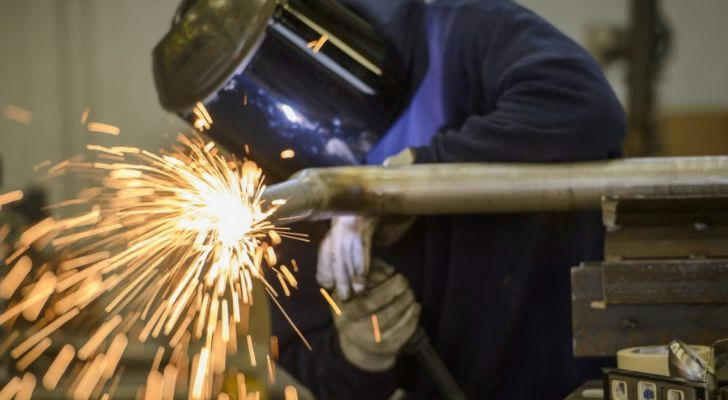Understanding the Role of Welding Contractors in the Construction Industry
Behind nearly every bridge, skyscraper, and industrial structure stands the steady hand of a welding contractor. These professionals do more than melt metal—they make modern construction possible. Though their work often goes unnoticed, welding contractors are vital to the strength, safety, and longevity of infrastructure around the world.
To understand why welding contractors are indispensable in today’s construction world, take a closer look at what they do, the skills they bring, the challenges they face, and how to choose the right one for your project.
The Responsibilities of Welding Contractors
Welding contractors are the people who plan and perform the welding work on construction sites. Before they even touch a torch, they study technical drawings and blueprints to figure out exactly what needs to be built and how it should be joined together. This includes selecting the right welding method—like MIG, TIG, or stick welding—based on the materials and conditions.
Their job goes beyond simply doing the weld. Contractors often:
• Coordinate with engineers and project managers
• Order and prepare materials
• Set up safety equipment and workstations
• Inspect completed welds for quality and strength
In larger projects, they may also supervise a team of welders or apprentices, making sure the work is consistent and up to code. In short, they’re part technician, part project manager, and part safety officer.

Essential Skills for Successful Welding Contractors
Being a welding contractor takes more than knowing how to handle a torch. It’s a job that blends technical skill with on-the-job problem solving and a strong sense of precision.
Here are some of the core abilities top contractors rely on:
• Welding Mastery: A solid grasp of different welding techniques and how they behave with various metals—steel, aluminum, stainless steel—is essential.
• Blueprint Reading: Contractors must understand technical diagrams and know how to turn a drawing into a solid structure.
• Attention to Detail: A single flawed weld can compromise the integrity of an entire structure.
• Time Management: Projects are often on tight schedules. Contractors need to stay efficient without sacrificing quality.
• Communication Skills: Clear communication with other trades and site supervisors helps keep the job running smoothly.
These aren't just “nice to haves”—they’re essential for avoiding mistakes, staying safe, and keeping projects on track.
Challenges Faced by Welding Contractors
Welding is rewarding, but it’s not without its difficulties. One major challenge is the physical environment. Contractors often work outdoors, in high places, or in tight spaces. According to the U.S. Bureau of Labor Statistics, welders face higher-than-average injury rates due to burns, falls, and exposure to heat and fumes.
Another challenge is safety. Proper ventilation, protective clothing, and regular equipment checks are crucial. Mistakes in this area can lead to serious accidents.
Then there’s job stability. Demand for welding work tends to rise and fall with the economy. During construction booms, contractors may find themselves overloaded. During slowdowns, they might struggle to find consistent work.
Finally, there’s the rapid pace of technological change. More companies are adopting automated and robotic welding systems, which means staying current with new tools and certifications is a must for long-term success.
Career Opportunities in the Welding Industry
Despite the challenges, welding offers plenty of opportunities for those who enjoy working with their hands and solving problems in real time. Many contractors start out as general welders, learn the ropes through apprenticeships or trade schools, and work their way up.
Welding contractors can specialize in different industries, including:
• Construction – large buildings, bridges, highways
• Oil and Gas – pipelines, pressure systems
• Shipbuilding and Marine – underwater welding and vessel repairs
• Aerospace – precision parts and frame welding
• Manufacturing – automated assembly lines
With industries pushing for better infrastructure and cleaner energy, the demand for skilled welding contractors is expected to remain strong. According to the American Welding Society, the U.S. will need over 300,000 new welding professionals over the next few years to meet growing industrial needs.
Certification from organizations like the AWS (American Welding Society) can also help contractors access more complex or high-stakes jobs.
Finding Welding Contractors
When it’s time to find welding contractor, it pays to do a little homework. Start by defining what kind of welding the project needs. Is it structural steel? High-pressure piping? Decorative ironwork? Knowing this helps narrow down specialists.
Some smart steps include:
• Check Credentials: A good contractor will hold the right licenses and welding certifications.
• Review Past Work: Look at previous projects or request a portfolio.
• Ask About Safety Practices: Their answer can reveal how seriously they take workplace risks.
• Read Reviews or Ask for References: Reputation matters.
• Get a Detailed Quote: The best contractors are upfront about materials, timeframes, and expectations.
Hiring the right person means fewer delays, fewer surprises, and a finished product that holds up for years to come.
Final Thought
Welding contractors might not always be in the spotlight, but their work holds the world together—sometimes literally. From reading blueprints to laying perfect seams of molten metal, these professionals blend science, craftsmanship, and grit. For anyone considering a future in welding, or planning a major project, understanding this role is the first step toward something solid—maybe even steel solid.

